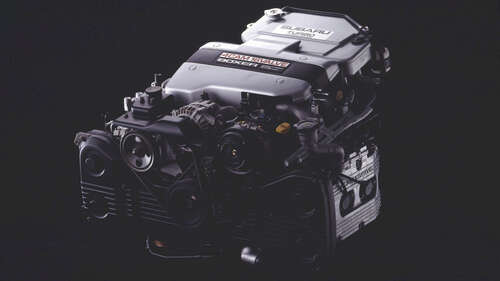
Perhaps the most outstanding feature of the EJ20 engine is its sound. The signature “Subie rumble” comes from a combination of the engine’s layout and the unequal-length exhaust manifold assembly for the turbocharger. Unlike most four-cylinder engines, it has a low rumble that ascends into a growl as you make your way through the RPMs. When you hear a Subaru engine, there’s no doubt that you’re hearing a Subaru engine. They’re identifiable from miles away.
The second-generation Subaru WRX was the first one to land in the United States. Often referred to as the “Bugeye” model because of its round lights, it had 227 horsepower. While that may not seem like much by today’s standards, it’s worth remembering that it’s more power than an equivalent model year Audi A4 had. The 2019 WRX was the final year that Subaru utilized the EJ20, and it had 268 horsepower.
Contrary to what you might hear, the EJ20 engine is quite reliable. In truth, the issues you hear about, namely head gasket failure, are largely only an issue on the 2.5-liter EJ engine found in the WRX STI. The EJ20’s thicker cylinder sleeves and superior cooling to the EJ25 make it far less likely to have this failure. In the case of the EJ20, it’s like most engines. Take good care of it, and it’ll take good care of you.

